
THIS POST MIGHT CONTAIN AFFILIATE LINKS. MY DISCLOSURE POLICY GIVES YOU MORE DETAILS.
It doesn’t have to be rocket science to create Montessori activities.
If you've thought about how to bring some of the best of the Montessori philosophy into your home, you might be ready for advanced-level activity creation. Make your own Montessori activities at home!
Traditional Montessori "works" are separate activities that give children meaningful and engaging work to do during the 2-3 hour long work block.
At home, these works (or activities) should give your child a meaningful activity to work on that advances their skills, helps them explore their world, and makes abstract concepts concrete.
As a Montessori school principal and Montessori mom, I'm constantly referring back to these guidelines for creating activities at our house.
You’ll want a review of the basic beliefs that make up the Montessori philosophy, as well as some idea of how to implement the Montessori method in your home. You don’t have to be a Montessori teacher or work in a Montessori school to bring the best ideas from Montessori education into your home and make your own Montessori works.
As a Montessori school principal and a Montessori mom, I’m constantly referring back to these guidelines for making works at my house. Below, you’ll find 6 core guidelines to make your own Montessori works for your kids at your house!
Beyond the Baskets: Make Your Own Montessori Works
First, read up on creating a Montessori home set up so you're prepped for the concepts around space and works rotation.
Then, read on to go beyond the baskets to get ideas for how to make a work more useful to your child.
For your Montessori home set up, these aren’t mandatory. However, learning some of the ways a Montessori teacher would think about creating the prepared environment will help you make your own Montessori works.
Concrete, Hands-On Works Develop Abstract Concepts
One of the foundations of Montessori education is the concept of concrete to abstract. We use physical objects to translate abstract ideas into concrete form.
This helps kids manage complicated concepts and have something physical to manipulate as they make their thinking visible with the work materials. These concrete activities help make a concept real for the child, and build their knowledge through experience.
A good example is the Numeral Cards and Counters work.
Lining up the counters next to one another and adding an additional counter for each number helps the child internalize the idea of addition.
The concept of adding on is internalized faster when she is physically counting one more marker.
Think of ways your child might be able to better internalize a concept at home with a work that invites them to physically manipulate materials.

Using physical counters to understasnd addition.
Geography puzzles do this. Physical models of clocks, the solar system, or the seasons work well. In our school, a work to reinforce concepts of the seasons includes label cards for the four seasons and tiny Barbie clothes to place in groups according to the appropriate season.
At our house, we were reading books about the ocean, and my daughter got a set of plastic sea creatures for a gift. She was sort of playing with these creatures, talking about the otter swimming in the coral reef and the penguins splashing into the icy water, and I got the idea to create an ocean scene out of felt where she could place all these different animals in their ocean habitats.
It’s so much fun to put the sea turtles in caves on the sand (and for Moana’s family to be standing by all the while). When you make your own Montessori works from regular toys, you give them meaning and purpose.
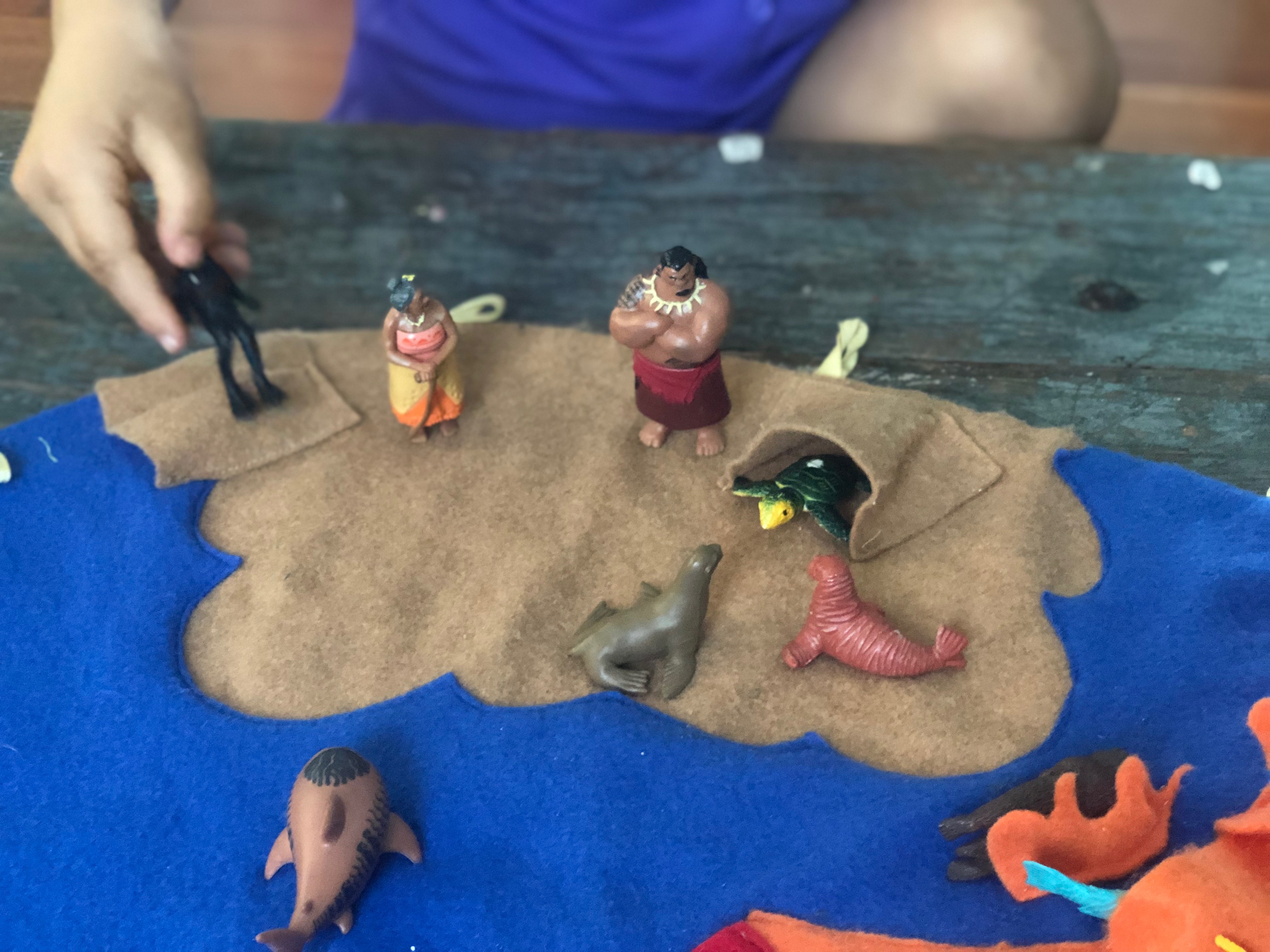
Moana's family hangs out with sea turtles on the sand, while an otter hides in the coral.
Reduce Distractions and Narrow the Focus
The activity should contain just what the child needs. Reducing distractions and eliminating visual clutter is key to helping children focus on the task at hand.
With any good Montessori home set up, visual clutter is eliminated by reducing the number of items the child has access to at one time.
In our house, that means the Montessori closet is full of works just ready to go on the shelves, but my daughter doesn’t have permission to go into the closet and “play” in there.
If she requests a work she hasn’t seen in a while, I can just go get it for her, but we only work with the works that are out.
I know it sounds rigid, but children can’t reliably focus on any one task (or play!) when they have too many things to visually process.
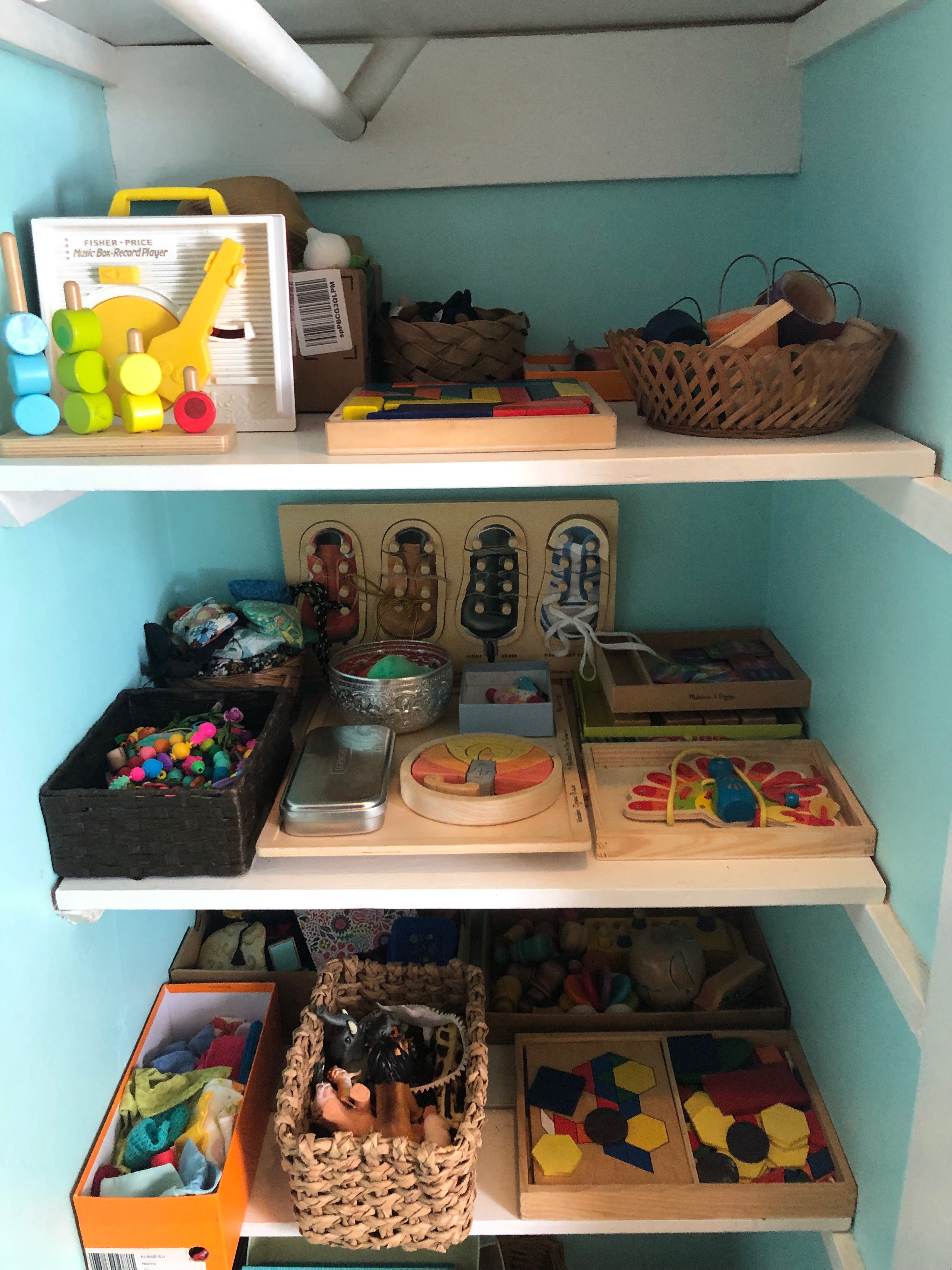
Our Montessori "works closet" stores prepared works, ready to be rotated out.
Not to mention that when ALL the toys are available they become impossible to manage, pieces disappear, the clothes needed for this particular doll become lost, and half the toys become meaningless. When you prepare the environment well, kids can get a TON out of their toys and works without a lot of work from you.
Isolate One Aspect
To reduce distraction even more, Montessori works isolate one aspect that might be different among the materials. So if colors are being taught, all the pegs will be the same shape so ONLY the color will be focused on.
You can think about this in terms of reducing distractions but also in terms of simplifying the learning for children (especially when they are very young).
“The child has a mind able to absorb knowledge. He has the power to teach himself.”
-Maria Montessori
Control of Error
Montessori materials are designed so that the child receives instant feedback as she works, allowing her to recognize, correct, and learn from her mistakes without adult assistance. Putting control of the activity in the child’s hands strengthens her self-esteem and self-motivation as well as her learning.
This means that, after completing the work, your child shouldn’t have to have you “check it” to make sure she did it right. She should be able to see if she completed it correctly and then adjust her work to get the right outcome. Think about a puzzle-- it’s obvious when a piece is in the wrong place and the child can immediately see that this is wrong and adjust the piece until she gets it right.
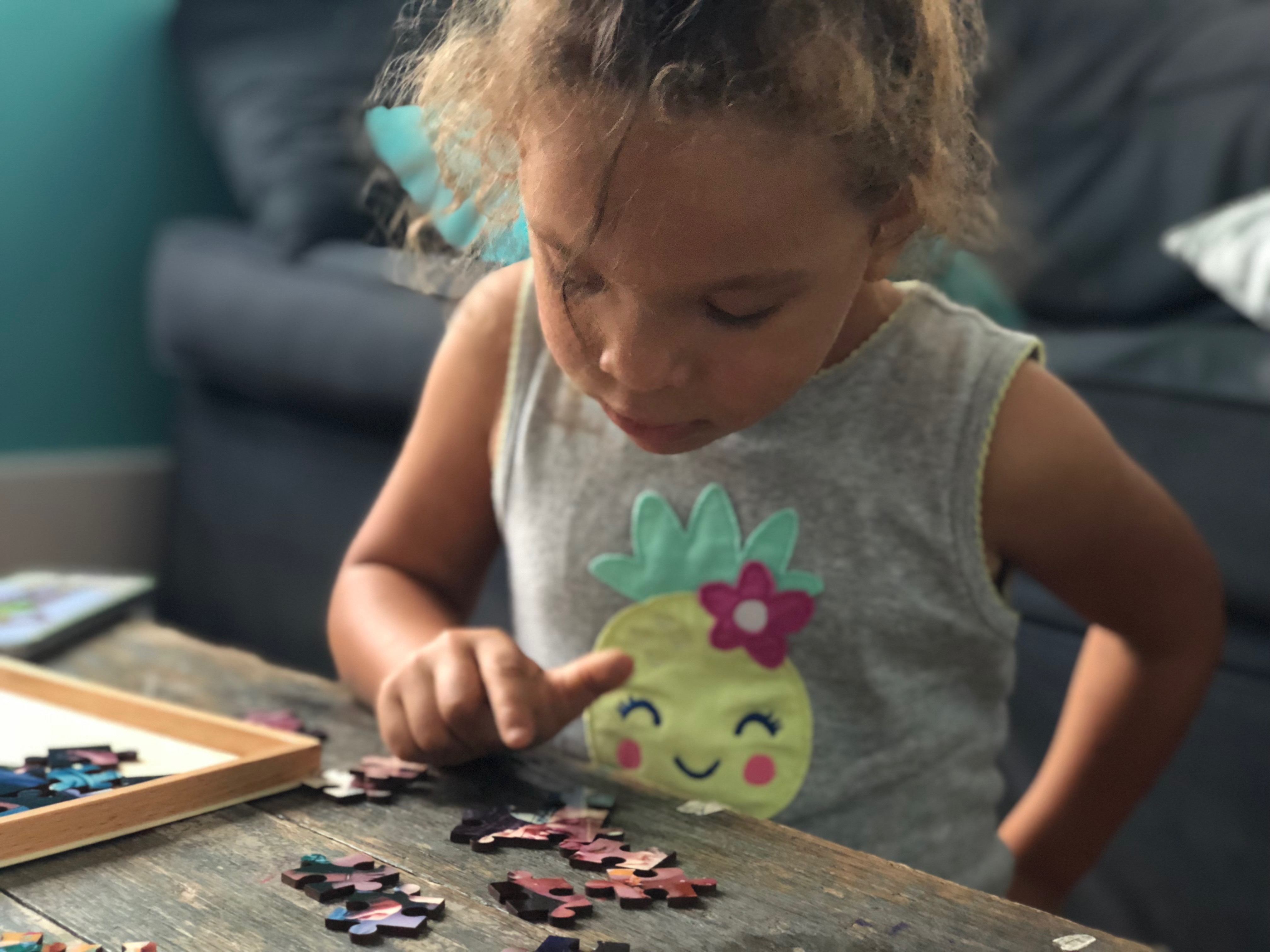
I don’t emphasize any kind of completion in my house. She works with materials until she is done working with them and then we move on. Maybe she’ll pick them up again, maybe not.
The more she works with a particular work, the more mastery I can see. I don’t really have to do much to make that happen because she’s so engrossed in her work, checking to see if she completed it right and then adjusting her work by herself. This is the foundation of true academic excellence!
Multiple Levels of Challenge
Each work can have multiple levels of challenge built in to it that you expose your kids to as they master more of the concepts.
For instance, the language work that we use has students taking a set of words and matching them to pictures. (The pictures all have the words on the back too-- so students can check their own work!)
Then, when they’ve mastered this part of the work, they can use the moveable alphabet to spell out the words they just sorted.
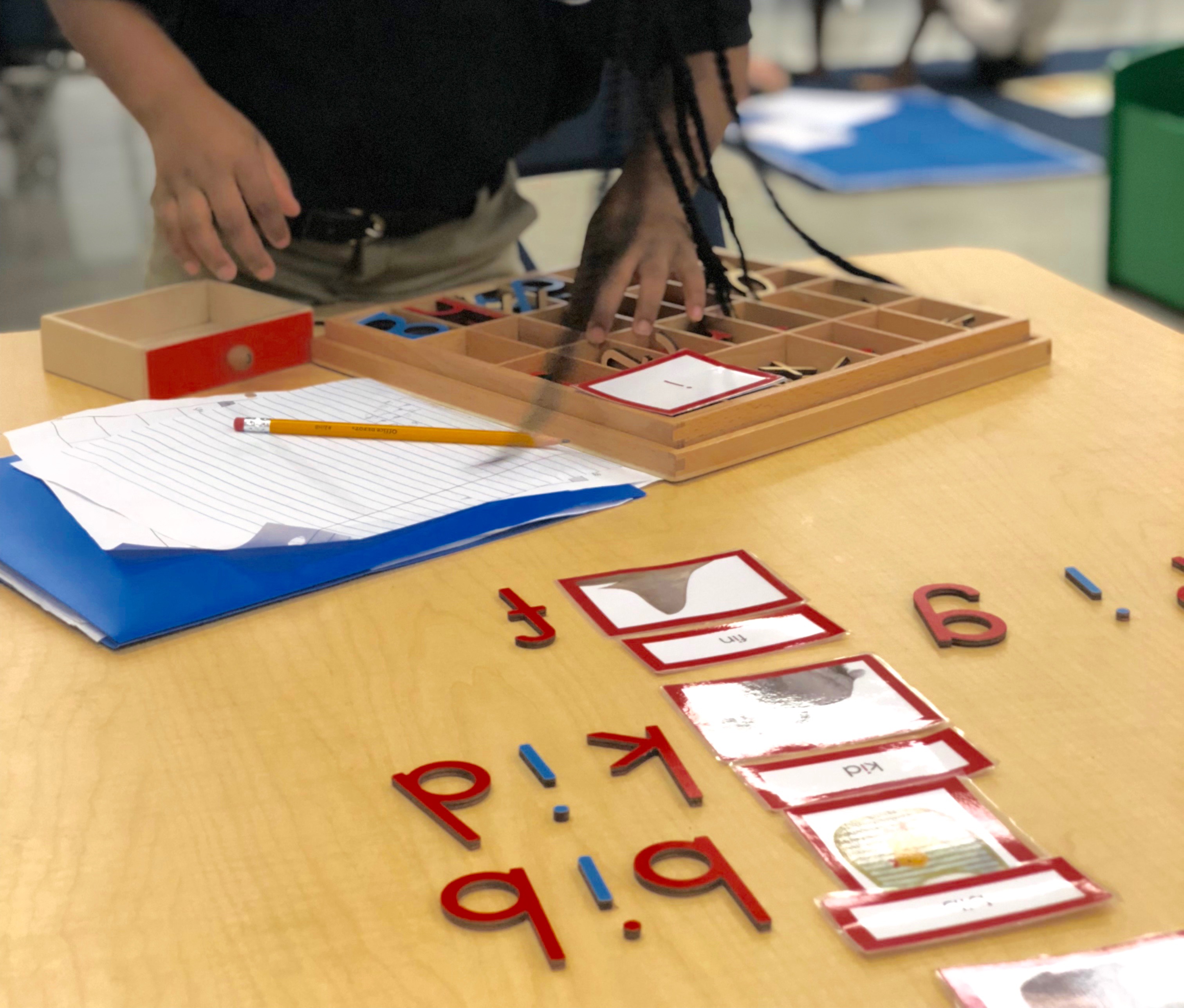
The next level would be writing these words themselves.
After that, activities could involve drawing a picture to match the word, putting them in alphabetical order, challenging themselves to spell the words without looking, etc.
When you make your own Montessori activities, you can add layers of complexity depending on your child’s interest. Sometimes, the work appears a few weeks later and it’s more complex this time around.
With just a little practice, you will get really good at inventing meaningful works for your children at home. Following Montessori principles gives you a strong foundation as you make your own Montessori works, and you will learn a ton as you watch your kids work with what you’ve prepared.
Follow their mind and find out how to make the works you’ve created even more meaningful!
Get this two-page Montessori Set Up Guide to get started setting up your home with Montessori principles!
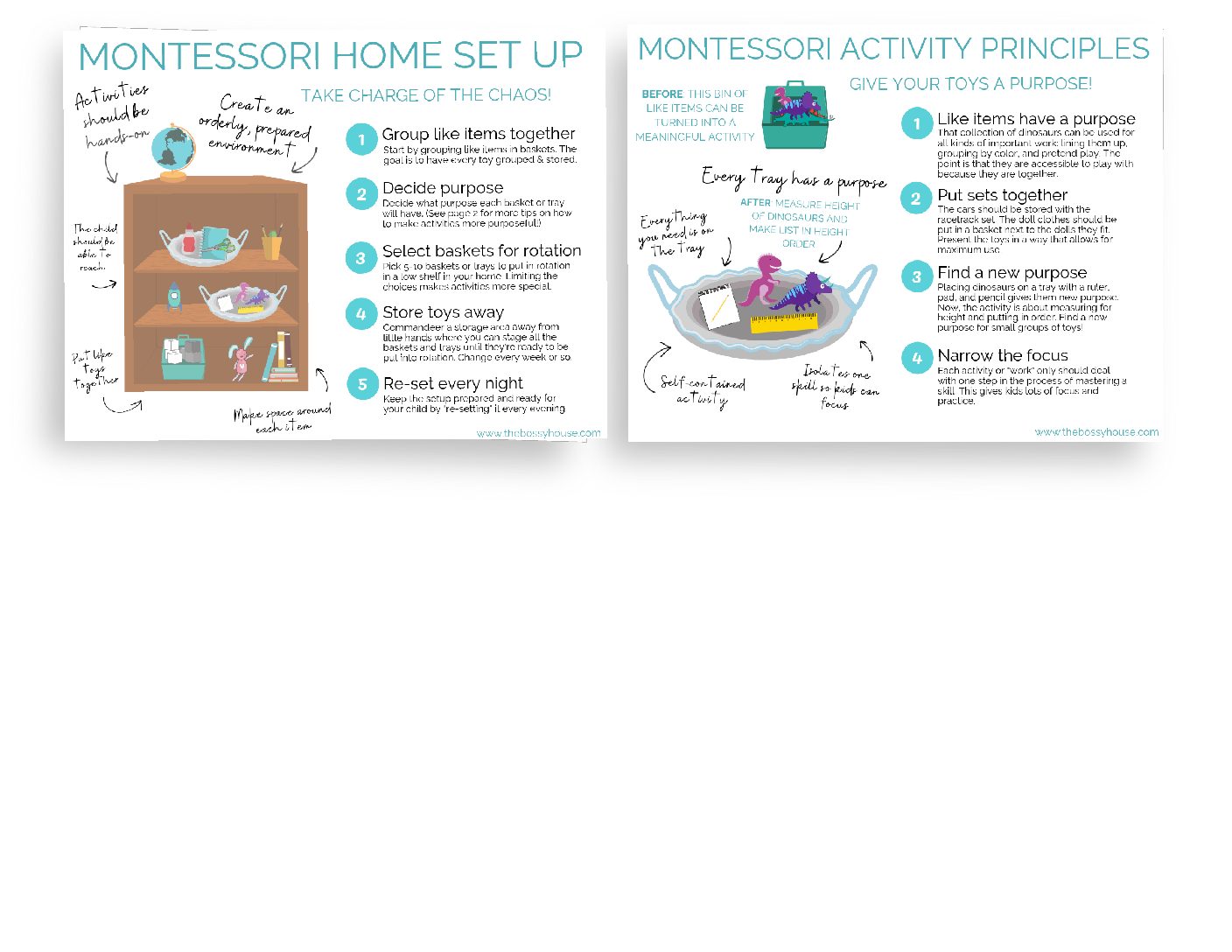

I love this!
I am getting so many ideas for my young grandchildren, and my older grandchildren, plus my own children!
Thank you so much!
So glad! Coming from you, that’s wonderful.